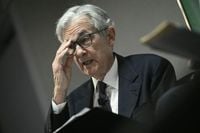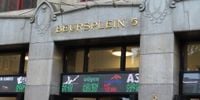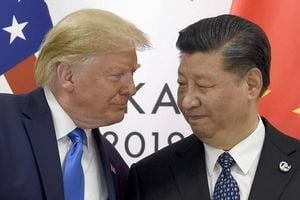On May 7, 2025, the Federal Reserve made a pivotal decision to keep the interest rate unchanged at 4.25 to 4.5 percent, a move that reflects ongoing concerns about the economic landscape shaped by President Donald Trump's trade policies. This decision was met with mixed reactions across financial markets, highlighting the delicate balance the Fed must maintain in navigating inflation and employment levels.
The Fed's decision, announced during a press conference led by Chairman Jerome Powell, comes amidst a backdrop of increasing uncertainty due to the ongoing trade war initiated by Trump. The central bank emphasized that while trade developments have influenced economic figures, overall economic activity has continued to grow at a solid pace. Powell noted, "Inflation is still above the target," indicating that the Fed is cautious about making any hasty policy changes.
Analysts have pointed out that the Fed's current stance is indicative of a broader strategy to maintain stability amid fluctuating economic indicators. Philip Marey, an analyst at Rabobank, stated that Fed officials are not overly concerned about the contraction of the American economy in the first quarter of 2025. This sentiment was echoed by the recent job report from the U.S. Department of Labor, which revealed that 177,000 jobs were added in April, surpassing economists' predictions of 138,000. The unemployment rate remained stable at 4.2 percent, suggesting a resilient labor market.
However, the Fed's decision not to lower interest rates has raised questions about how Trump will respond. The president has previously urged the Fed to cut rates, arguing that there are no inflation risks. He pointed to declining oil prices as a sign that the economy could handle lower borrowing costs. Trump's relationship with Powell has been fraught; he has openly criticized the Fed chairman, labeling him a "complete stiff" and even threatened to dismiss him, although he later clarified that Powell could remain in his position until his term expires in May 2026.
As the Fed maintains its current interest rate, the implications for the stock market are significant. Wall Street reacted positively to the news, with the S&P 500 index closing 0.4 percent higher, while the Dow Jones gained 0.7 percent. This uptick was bolstered by optimism surrounding upcoming trade talks between the U.S. and China, set to begin in Geneva. Investors are hopeful that these discussions could lead to a resolution of trade tensions, which have been a source of economic uncertainty.
In Europe, the Amsterdam Stock Exchange (AEX) and the Brussels stock exchange also prepared for a higher opening following the Fed's announcement. Futures on the AEX index indicated a gain of approximately one percent shortly before the market opened. The AEX had closed almost flat at 896.02 points on the previous day, reflecting investor caution ahead of the Fed's decision.
Despite the positive outlook in the stock markets, the Fed's decision has not alleviated concerns about rising unemployment and inflation. Policymakers have warned that the risks of increased joblessness and higher inflation have grown, underscoring the challenges ahead as the economy navigates through the complexities of trade policies and global market dynamics.
In terms of sector performance, companies like AB InBev and Pharming reported strong earnings, with AB InBev's normalized EBITDA rising by 7.9 percent, significantly outperforming analysts' expectations. Pharming also saw a sharp increase in revenue, particularly from its drug Ruconest, prompting the company to raise its sales target for the year.
As the week progresses, all eyes will be on the upcoming interest rate decision from the Bank of England and the weekly jobless claims in the U.S., which could provide further insights into the economic trajectory. The financial landscape remains in flux, and the Fed's cautious approach may be a necessary strategy to ensure stability in an unpredictable environment.
In conclusion, the Federal Reserve's decision to hold interest rates steady amidst rising inflation and employment concerns reflects a careful balancing act. With the economic landscape shaped by external trade pressures, the Fed's strategy will be closely monitored by investors and policymakers alike as they navigate the complexities of the current economic climate.





